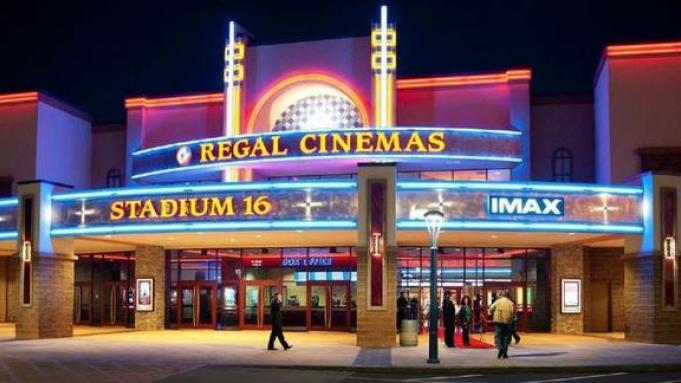Streaming-Focused Studios and Struggling Theaters Make Their Peace
The theatrical window lives on, but it’s smaller than ever, and the difference, at least distribution-wise, between blockbuster and 'straight-to-video' is super narrow

It’s certainly not on the level of ending war in the Middle East, especially this week, but the owner of the second biggest U.S. theater chain made peace with Hollywood studios, signing a batch of landmark deals this month that lock in place what likely will be the shape of theatrical exhibition in a streaming-first future.
The result is, in a word, less.
Less as in, less time for movies in big communal physical viewing spaces, just as we’re tentatively returning to them. Less time until people can instead watch the movie at home on a streaming service on their big, shiny home-entertainment system. Less marketing expense for studios across the life of a given project.
Also, though less in parallel construction, the deals also mean fewer kinds of movies will debut in theaters before heading off to everything else studios do with “movies.” The big, four-quadrant superhero movies will keep on showing up in theaters, but for everything else, it’s going to be a much more complicated conversation, and a lot fewer movies of many kinds likely will end up on big screens first and only.
For theaters, which were hit as hard as any industry by pandemic’s lockdowns and film-production halts, the deals represent an unwelcome but useful opportunity to learn to do more with less. I’d argue what they really need to do is figure out how do different with less of what they’ve had from Hollywood for more than a century.
Exhibitors have clung to a 90-day exclusive window for decades, an outdated and expensive artifact from a long-gone media landscape. That window helped paper over some of the nasty realities of a business model that no longer makes as much sense (though for big films, it will still be a lucrative option).
It’s been two decades since movie theaters saw consistent growth in ticket sales, keeping revenue growing by increasing ticket prices. The just-revamped site for industry trade group NATO doesn’t even show the ugly data behind those trends anymore.
The smarter way to stay on top of the streaming and OTT industry. Sign up below.
But people have other viewing options these days, options that young audiences in particular are exercising routinely. A recent Deloitte study suggests Gen Z really prefers to play video games, listen to music and connect to both on social media. Watching movies and TV at home is, unlike for older generations, a distant fourth.
Theaters need to rethink how they’re going to survive, and possibly thrive, in the future. With young audiences interested in different experiences, maybe it’s time theaters pondered providing different experiences.
That may include transforming some screens into virtual-reality experiences, esports tournament sites, virtual concert venues, or even retail showcases for partners such as Amazon, eBay, Best Buy, Walmart, and Shopify.
Regardless of what theater chains do, the deals are way overdue for Hollywood. The studios have long wanted a different arrangement and, thanks to radically changed leverage amid the pandemic’s depredations, finally they have it.
The actual deals –which vary from studio to studio – govern how long five media companies will give Cinemark’s Regal theaters exclusive rights to their movies before moving on to the rest of the distribution ladder, most especially to all the subscription streaming services they’ve launched. While other exhibitors may cut different deals with the studios, what’s far more likely is Cinemark’s agreements form a template for the rest of the industry.
Regardless, it’s clear that different sorts of movies will get different treatments. The most popular and high profile will stay in theaters somewhere between 17 and 45 days. That’s far less than the traditional 90 days, and represents a sea change for the industry, even for these big movies.
For everything else, the deals have created a new kind of decision sieve for Hollywood projects. Some will get a simultaneous theatrical and streaming premiere, and others will head only to online services.
The sieve used to decide what’s a big-budget movie, what’s a small and intimate film, and what sorry little project is only worthy of going “straight to video,” or “direct to DVD.” Along the way, studio specialty units, like what’s now Disney’s Searchlight, annually made a few modest bets on Oscar contenders alongside indie distributors, alongside notables such as A24 and Neon.
Now, that sieve gets considerably more nuanced.
The blockbusters are still at the top, headed for exclusive runs in theaters and a big traditional marketing push. But there’s a set of mid-sized movies that Hollywood seemingly stopped making sometime around the turn of the century. Those films work great for streaming services.
So too do the niche projects that can find a specific audience among a streamer’s tens of millions of subscribers. Now those projects are also headed to streaming services, without the industry stigma the direct-to-DVD designation held.
Separately, the smallest movies are finding new ways to reach audiences too. Arthouse theaters are generating income by selling virtual tickets to their local mailing lists for the kinds of sharply curated collections of indie and foreign films that tend to get lost at the megachains such as Regal.
To my mind, services such as Film Movement Plus, Kino Marquee, and Alamo At Home provide the kind of curated experience for a core audience that represents a viable future for at least a corner of the exhibition business.
Meanwhile, in something of a man-bites-dog story, this week Netflix is debuting one of its big action films, Zack Snyder’s Army of the Dead, in theaters before bringing it to the streaming service (with an episodic series on the way). The streaming giant is even advertising the Dave Batista project heavily in traditional media, in a way it seldom does.
No one imagines the zombie action film is an Oscar contender, which is the typical Netflix project the past three years to get any kind of theatrical release (the lone exception I can think of is Susanne Bier’s horror hit Bird Box, with Sandra Bullock).
But it shows what even the biggest streamer is thinking: Theatrical exhibition still matters for some films, and they’re going to get a traditional treatment from media companies in a way that maximizes their revenue potential.
And then there’s everything else, available across the globe across a wide range of streaming services, targeted to audiences who’ll love them. Seems to me like a better way to go.
David Bloom of Words & Deeds Media is a Santa Monica, Calif.-based writer, podcaster, and consultant focused on the transformative collision of technology, media and entertainment. Bloom is a senior contributor to numerous publications, and producer/host of the Bloom in Tech podcast. He has taught digital media at USC School of Cinematic Arts, and guest lectures regularly at numerous other universities. Bloom formerly worked for Variety, Deadline, Red Herring, and the Los Angeles Daily News, among other publications; was VP of corporate communications at MGM; and was associate dean and chief communications officer at the USC Marshall School of Business. Bloom graduated with honors from the University of Missouri School of Journalism.

